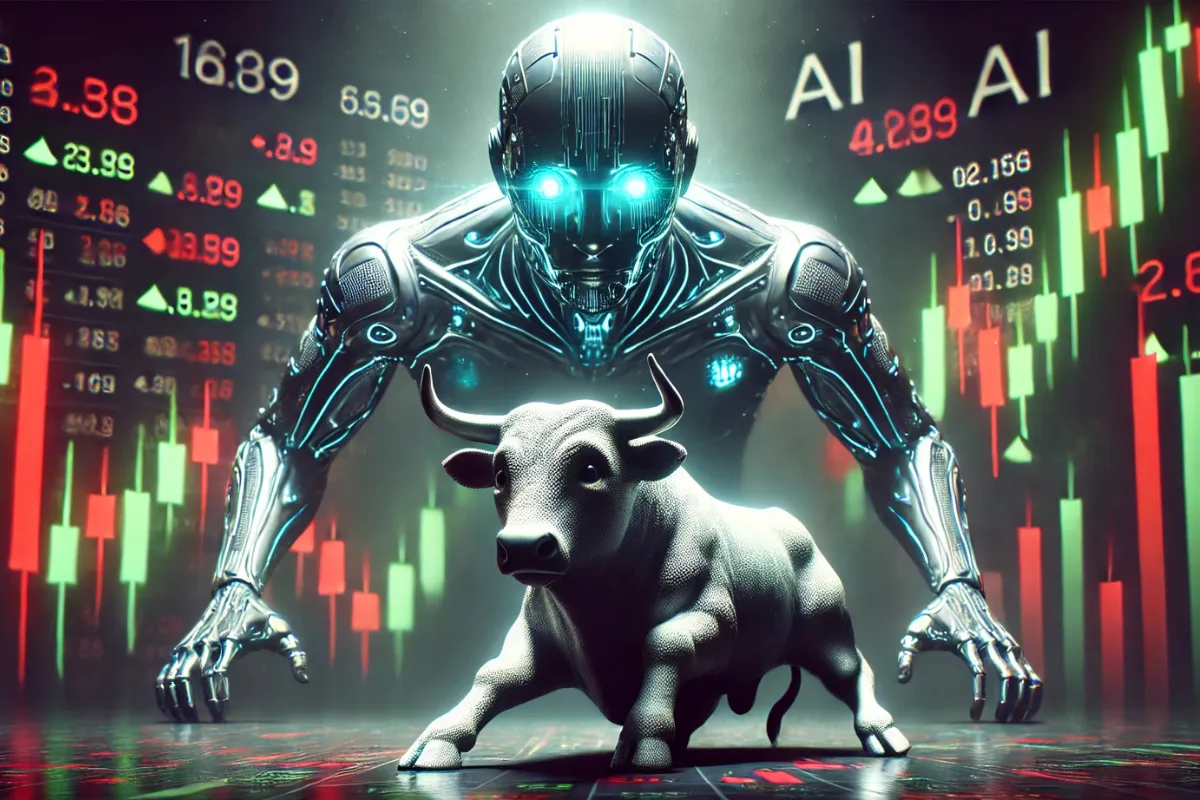BLOG

Market Fragile After Two Year Rally
After two consecutive years of robust US stock market gains, investors are nervous about stock values and meeting high growth expectations, especially in the tech sector. For reference, the major indices' two-year run has been tremendous with the following indices gains from January 2023 to December 31, 2024:
S&P 500: 53.19%
NASDAQ: 84.50%
S&P 400 Mid Cap: 28.41%
S&P 600 Small Cap: 21.65%
MSCI Ex – US: 23.29%
S&P Bond Index: 10.91%

So understandably investors are skittish (technical investment term) that any political, economic, or business threat could send investors running for the exit doors.
Yesterday, the panic selling was the result of a late December news release that DeepSeek, a 2023 Chinese start-up company with 200 employees, released an open-source AI Large Language Model (LLM) that supposedly cost less than $6M to develop. Investors and their computer trading models aggressively sold stocks in fear that all AI companies are possibly overvalued. Their logic is if a two-year-old company using outdated Nvidia GPU chips can develop hyper-fast-performing computations at a fraction of the costs, then multi-billion tech industry leaders may be way overvalued or even possibly replaced by this tiny startup company in China.
My question is what is the possibility that tech leaders such as Google, Microsoft, Nvidia, Apple, Oracle, and many others with 20 years of experience and trillions of capital are so incompetent, incapable, or hiding technology that a small startup company could develop in less than 24 months what they have been focused on for years? Now we know how trustworthy our Chinese comrades and their government officials are. However, investors may want to verify the potential risks to the AI industry before dumping long-standing proven leaders for a foreign startup. That said, in the past couple of weeks, respected leaders in the tech space including Jensen Huang, founder of Nvidia, and Marc Andreessen, founder of Mosaic, Netscape, and Andreessen Horowitz venture capital fund, have stated DeepSeek’s technology is impressive and may advance the progress of many AI companies.
Nonetheless, investors somehow got spooked by weeks-old information and stampeded to the exits yesterday. The panic selling was significant, driving stock prices down at record levels. AI poster child, Nvidia, lost close to $589 billion in market capital which was the single largest market value loss in stock market history. This single-day decline doubles the previous record also set by Nvidia on September 3, 2024, dropping $279 billion. Nvidia’s valuation dropped from $3.5 trillion to $2.9 trillion. Wow!
Much has been reported in the past week evaluating the long-term impact of DeepSeek’s technology and its impact on the industry. Forbes offered this commentary yesterday:
“The release of DeepSeek’s large-language model, which shook confidence in U.S. dominance in generative AI, may initially not seem like a negative catalyst for Nvidia, considering DeepSeek’s model was trained on Nvidia’s GPUs, like most other advanced AI programs.”
The good news is that the major indices and the US economy are still fine. Investors must have come to the same conclusion after a good night’s rest and returned to their trading desks ready to restore their devasted portfolios. The major indices and stocks of tech leaders bounced back recovering nearly 50% of yesterday's decline. Great two days of day trading for those with either inside information or nerves of steel.
It’s worth reiterating the resilience of US businesses and their employees as demonstrated by sustained growth these past 100+ years. Consider only a handful of periods were as challenging as the past four years, including:
A worldwide viral infection that shut down societies and businesses
Unprecedented trillions in US government stimulus funding caused surging 1970s-like inflation
Supply chain disruptions limit supplies to nearly every industry including manufacturing, construction, retail, and technology.
A repeat of the 1970’s Federal Reserve aggressive interest rate hike campaign
Despite these challenges, the US economy and stock market have performed well during these events and more impressively rallied to new all-time stock values.
What Does This Mean to Me?
President Trump made the comment that yesterday’s selloff and DeepSeek’s announcement should be a “wake-up call” to AI companies. I would extend that warning to investors as well. Analysts have been warning of high valuations of stocks and major indices based on possibly unrealistic growth expectations.
At current values, investors are quick to reward or punish companies after earnings reports. Two weeks ago, major bank institutions including JP Morgan, Goldman Sachs, and Bank of America announced strong gains in their revenue and earnings and their respective stocks rallied. The gain in stock prices matched somewhat to the revised expected future gains in their earnings.
Most investors are aware of stock market corrections as one way to reset stock values to growth expectations. Investors watch ratios of stock prices to future earnings (referred to as price-to-earnings ratio or P/E) to determine if the stocks are at a premium or discount to future earnings. Another way to explain this is that house values are determined by the current rent income the house can generate. The more rent income a house can generate the more the house is worth. Typically, house values correlate closely to changes in rent income. If house values increase faster than rent income the house is possibly overvalued and at risk of declining in value unless rent income increases to justify the higher house price.
The same is true for stocks and the price at which they trade. However, another process to align earnings to stock prices is for stock prices to stagnate with very little change in price. While a company’s stock price stays in a flat price range their increasing earnings are improving the P/E ratio. If a stock remains stagnant too long then the P/E ratio improves to the point where the company stock is now at an attractive discount, becoming a buying opportunity.
This may be what is happening in the US stock market. Since December 6, 2024, the S&P 500 has traded in a stagnant flat range. Concerns about the companies in the S&P 500 being overvalued based on a higher P/E range, may be resolved by the index not increasing for a while so earnings can catch up.

The NASDAQ index has also been trading in a flat range since December 16, 2024, as earnings are possibly growing faster than S&P 500 companies.

We maintain a favorable view of the US economy and stock market. However, investors are concerned that stock prices are above historic ranges for their earnings. This imbalance will be resolved by either a short-term stock market correction or stocks continue trading in a flat range until earnings improve the P/E ratios. It is also worth noting that after two robust years of stock price growth volatility is typically the means to the next market rally.
CONTACT
Check the background of your financial professional on FINRA's BrokerCheck.
The content is developed from sources believed to be providing accurate information. The information in this material is not intended as tax or legal advice. Please consult legal or tax professionals for specific information regarding your individual situation. The opinions expressed and material provided are for general information, and should not be considered a solicitation for the purchase or sale of any security.
We take protecting your data and privacy very seriously. As of January 1, 2020 the California Consumer Privacy Act (CCPA) suggests the following link as an extra measure to safeguard your data: Do not sell my personal information.
The information on this website is the opinion of Up Capital Management and does not constitute investment advice or an offer to invest or to provide management services. Before purchasing any investment, a prospective investor should consult with its own investment, accounting, legal, and tax advisers to evaluate independently the risks, consequences, and suitability of any investment.
Copyright 2024 | Privacy Policy | Terms & Conditions

